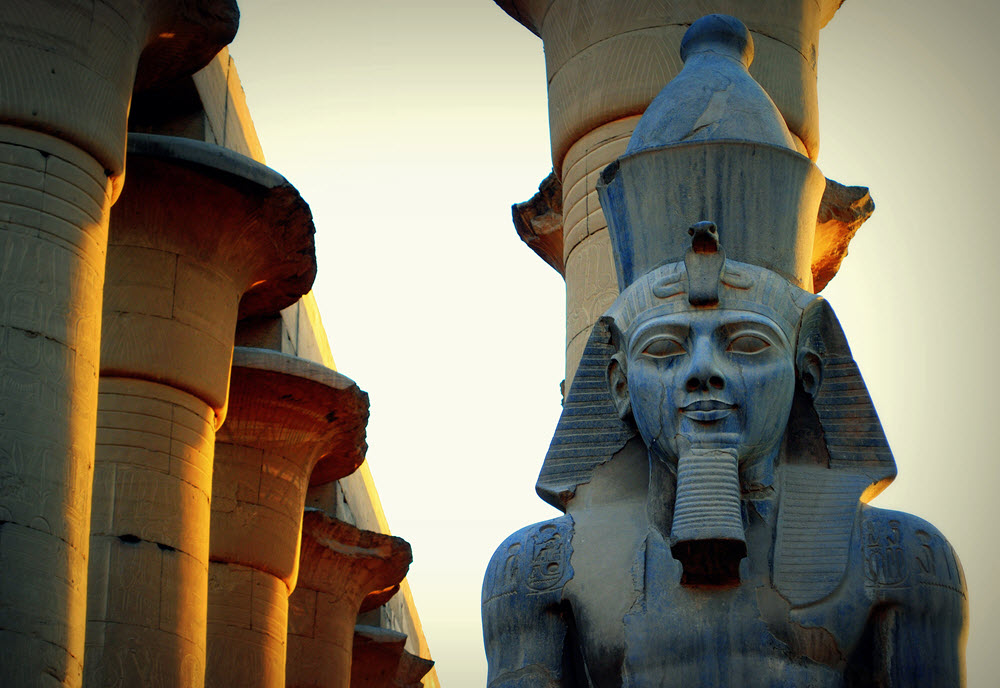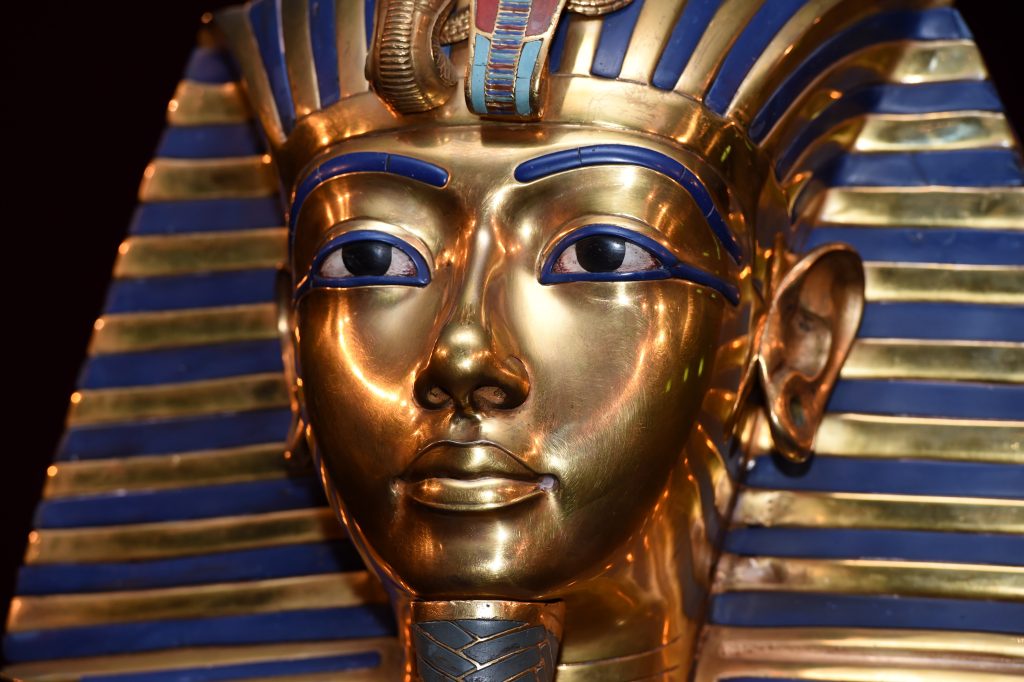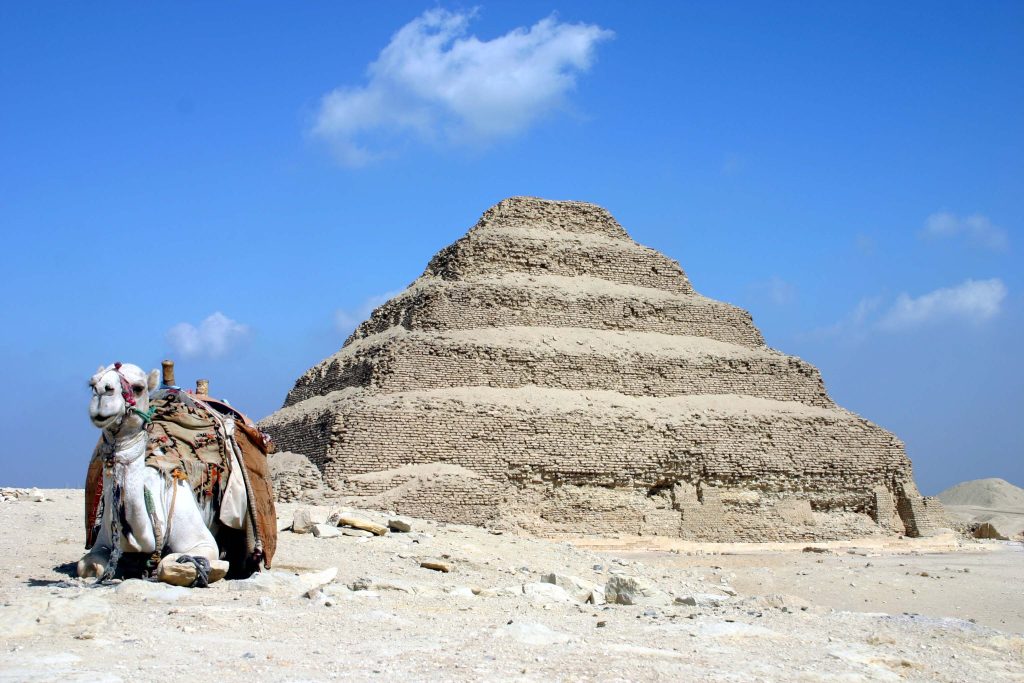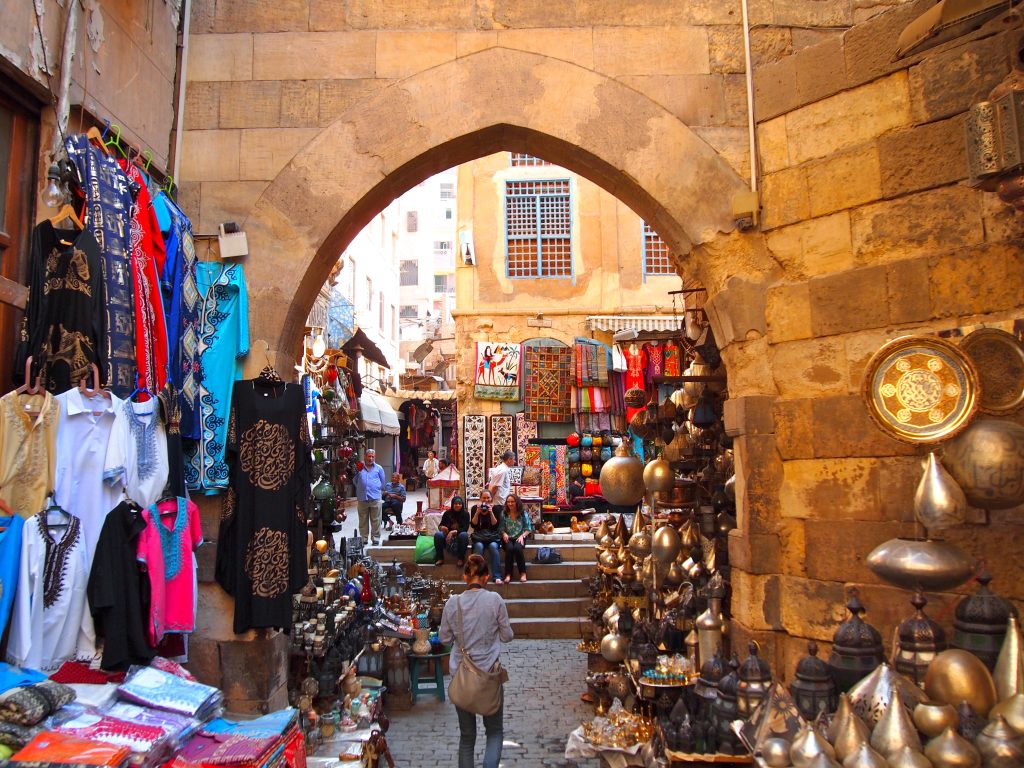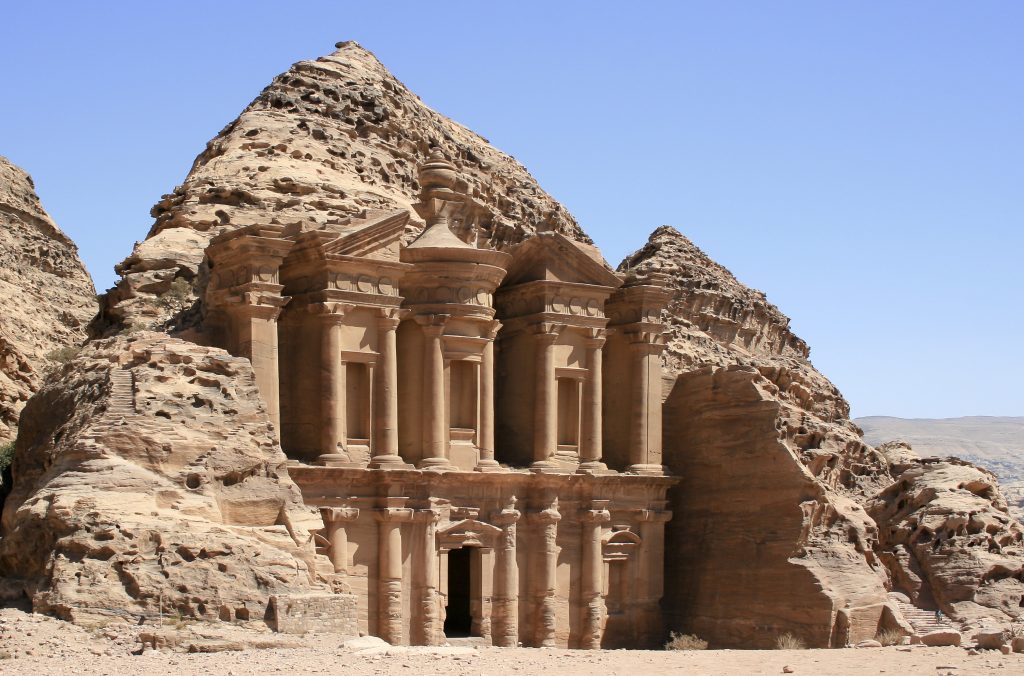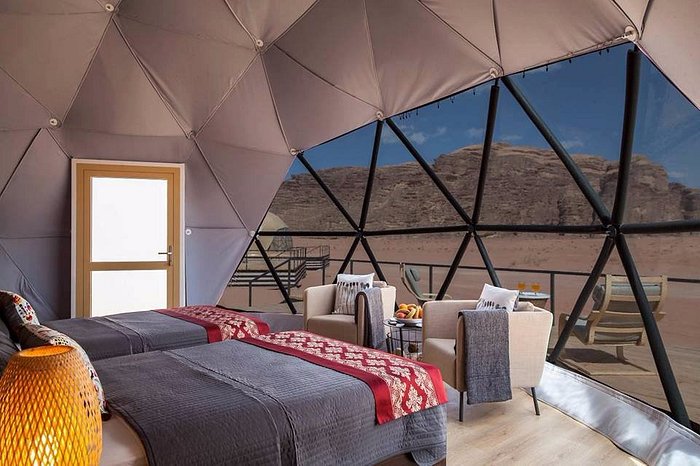If you’re a traveller with a passion for ancient history, breathtaking landscapes, and vibrant cultures, then a small group tour to Egypt and Jordan might just be your dream adventure. These two remarkable destinations, steeped in rich histories and offering some of the world’s most iconic sights, come alive in a unique way when experienced in the company of fellow explorers.
Here are a few reasons why embarking on a small group tour to Egypt and Jordan is an experience you’ll cherish forever.
- Expert Guidance: Small group tours often feature knowledgeable tour guides who are not only passionate about their respective countries but also well-versed in their history and culture. They’ll provide you with valuable insights and take you off the beaten path to discover hidden gems.
- Intimate Cultural Encounters: With a small group, you’ll have the chance to interact with local people, learn about their traditions, and gain a deeper understanding of their way of life. Whether it’s sharing a meal with a local family or haggling at a bustling bazaar, these experiences will stay with you long after the trip.
- Efficient Itinerary: Small group tours are carefully curated to maximize your time and make the most of your visit. You’ll see the iconic landmarks, such as the pyramids of Giza and Petra, while also exploring lesser-known but equally captivating sites that larger groups might miss.
- Flexibility: Unlike larger tour groups, small group tours often allow for more flexibility in your itinerary. If the group wishes to explore something specific or linger longer at a particular place, there’s often room for customization.
- Safety and Comfort: Traveling with a small group offers a sense of security, especially in unfamiliar territories. You’ll also enjoy the camaraderie and support of your fellow travelers, making the journey even more enjoyable.
- Shared Experiences: One of the most rewarding aspects of small group travel is the opportunity to share your experiences with like-minded individuals. Whether it’s witnessing the sunrise over the Nile or marveling at the intricate carvings of Petra, these moments are made even more special when shared.
- Lasting Friendships: Traveling in a small group often leads to forming strong bonds with your fellow adventurers. You’ll create memories together that will foster lifelong friendships.
Egypt and Jordan are lands of wonders waiting to be explored, and doing so in a small group tour offers an intimate and enriching experience. From the awe-inspiring pyramids and temples of Egypt to the mystical city of Petra in Jordan, every day on your journey is filled with discoveries.
So, if you’re ready for an adventure that combines history, culture, and breathtaking scenery, consider joining a small group tour to Egypt and Jordan – it’s an experience you’ll treasure forever.
Overview
16 October to 2 November 2024
Price from $9,200 pp Twin Share / From $11,850 Solo Occupancy*
Combining famous monuments, temples and one of the Seven Wonders of the Ancient World this tour of iconic sites showcases the very best of Egypt and Jordan.
CONDITIONS
- Exclusive, fully escorted, Travel with Me Journey
- Price does not include international flights
- Based on departure 16 October 2024
- Price based on a minimum of 16 participants and a maximum of 18 guests
- Limited Sole Occupancy rooms are available and will be allocated on receipt of tour deposit.
- A deposit of $1000 is required after 7 days of booking
- Finals are due 10 July 2024
- Prices and Itinerary are subject to availability and subject to change without notice
- Prices are based on USD and will be adjusted in line with exchange rate at the time of final payment.
- Amendment and cancellation fees will apply both from the supplier and Travel with Me
- Cancellations prior to final payment will incur loss of deposit and after final payment, all monies are non refundable unless a replacement can be found.
- Please ask your Travel with Me, Consultant, for a competitive Travel Insurance quote as insurance is compulsory on all Travel with Me Exclusive and Private Journeys
- Please ensure you have a current passport with a minimum of 6 months validity beyond the return date of your journey.
Itinerary
- Arrive at Cairo International Airport
- After that you will be met by Emeco field coordinator
- You will transferred to your hotel The Steigenberger Tahrir Hotel ( superior city view rooms) your home for the next 3 nights
- Check-in
- Dinner & Overnight at the hotel
- Buffet Breakfast at the Hotel
- 08:00 our Luxury A/C coach and English Speaking Egyptologist will be ready to take-off for a thrilling full day tour to the Pyramids, Sphinx of Giza, Memphis and Sakkara, lunch will be en-route at a premium local restaurant
- Back to the hotel
- Set Menu or Buffet dinner at the Hotel excluding beverages & overnight
The Giza Pyramid Complex, also called the Giza Necropolis, is the site on the Giza Plateau in Greater Cairo, Egypt that includes the Great Pyramid of Giza, the Pyramid of Khafre, and the Pyramid of Menkaure, along with their associated pyramid complexes and the Great Sphinx of Giza. All were built during the Fourth Dynasty of the Old Kingdom of Ancient Egypt, between 2600 and 2500 BC. The site also includes several cemeteries and the remains of a workers village. The site is at the edges of the Western Desert, approximately 9 kilometers west of the Nile River in the city of Giza, and about 13 kilometers southwest of the city center of Cairo. Along with nearby Memphis, the site was inscribed on the UNESCO World Heritage List in 1979.The Great Pyramid and the Pyramid of Khafre are the largest pyramids built in ancient Egypt, and they have historically been common as emblems of Ancient Egypt in the Western imagination. They were popularized in Hellenistic times, when the Great Pyramid was listed by Antipater of Sidon as one of the Seven Wonders of the World. It is by far the oldest of the Ancient Wonders and the only one still in existence.
- Breakfast at the Hotel
- 08:00 our Luxury A/C coach and English Speaking Egyptologist will be ready to take-off for a full day tour to The National Museum of Egyptian Civilization (NMEC), the Citadel, Mohamed Ali Mosque and Khan El Khalili Bazaars; lunch will be en-route at a premium local restaurant
- 17:00 back to the hotel for some rest
- 19:15 you will be transferred to the Nile Dock in Zamalek for a dinner cruising the Nile with and an Oriental Show, a Belly Dancer and a live music band on board the Nile Maxim http://www.maximrestaurants.com/restaurant4.php
The National Museum of Egyptian Civilization (NMEC) is a large museum (490,000 square meters (5,300,000 sq ft) ) in the ancient city of Fustat, now part of Cairo, Egypt. The museum partially opened in February 2017 and will display a collection of 50,000 artefacts, presenting Egyptian civilization from prehistoric times to the present day. The permanent collection is divided into two separate regions, one chronological the other thematic. The chronological areas will be the following: Archaic, Pharaonic, Greco-Roman, Coptic, Medieval, Islamic, modern and contemporary. The thematic areas will be the following: Dawn of Civilization, The Nile, Writing, State and Society, Material Culture, Beliefs and Thinking and the Gallery of Royal Mummies. UNESCO provided technical help to the museum.
The collections will be taken from other Egyptian museums such as the Egyptian Museum, the Coptic Museum, the Museum of Islamic Art, the Manial Palace and Museum in Cairo, and the Royal Jewelry Museum in Alexandria.
On 3 April 2021, the museum was officially opened by president Abdel Fattah El-Sisi, right before the moving of 22 mummies, including 18 kings and four queens, from the Egyptian Museum in an event termed the Pharaohs’ Golden Parade.
The Citadel of Cairo or Citadel of Saladin is a medieval Islamic-era fortification in Cairo, Egypt, built by Salah ad-Din (Saladin) and further developed by subsequent Egyptian rulers. It was the seat of government in Egypt and the residence of its rulers for nearly 700 years from the 13th to the 19th centuries. Its location on a promontory of the Mokattam hills near the center of Cairo commands a strategic position overlooking the city and dominating its skyline. At the time of its construction, it was among the most impressive and ambitious military fortification projects of its time. It is now a preserved historic site, including mosques and museums.
In addition to the initial Ayyubid-era construction begun by Saladin in 1176, the Citadel underwent major development during the Mamluk Sultanate that followed, culminating with the construction projects of Sultan al-Nasir Muhammad in the 14th century. In the first half of the 19th century Muhammad Ali Pasha demolished many of the older buildings and built new palaces and monuments all across the site, giving it much of its present form. In the 20th century it was used as a military garrison by the British occupation and then by the Egyptian army until being opened to the public in 1983. In 1976, it was proclaimed by UNESCO as a part of the World Heritage Site Historic Cairo (Islamic Cairo) which was “the new center of the Islamic world, reaching its golden age in the 14th century.
Khan el-Khalili is a famous bazaar and souq (or souk) in the historic center of Cairo, Egypt. Established as a center of trade in the Mamluk era and named for one of its several historic caravanserais, the bazaar district has since become one of Cairo’s main attractions for tourists and Egyptians alike. It is also home to many Egyptian artisans and workshops involved in the production of traditional crafts and souvenirs. The name Khan el-Khalili historically referred to a single building in the area; today it refers to the entire shopping district.
- Buffet Breakfast at the Hotel
- 07:00 our coach and English Speaking Egyptologist will be ready to take-off to the Coastal capital of Egypt and the main harbor, Alexandria. And you will start directly your guided tour and lunch will be en-route at a premium seafood restaurant (other vegetarian, vegan and non-seafood options are also available)
- Back to the hotel after the tour and check in at the Helnan Palestine Royal Hotel your home for the night (https://www.helnan.com/en/Hotel/helnan-royal-alexandria/i)
- Set Menu or Buffet dinner at the Hotel excluding beverages & overnight
The Library of Alexandria or The Bibliotheca Alexandrina is a major library and cultural center on the shore of the Mediterranean Sea in the Egyptian city of Alexandria. It is a commemoration of the Library of Alexandria, once one of the largest libraries worldwide, which was lost in antiquity. The idea of reviving the old library dates back to 1974, when a committee set up by Alexandria University selected a plot of land for its new library. Construction work began in 1995 and, after some US$220 million had been spent, the complex was officially inaugurated on 16 October 2002. In 2010, the library received a donation of 500,000 books from the Bibliothèque nationale de France (BNF). The gift makes the Bibliotheca Alexandrina the sixth-largest Francophone library in the world. The library has shelf space for eight million books, with the main reading room covering 20,000 square meters). The complex also houses a conference center; specialized libraries for maps, multimedia, the blind and visually impaired, young people, and for children; four museums; four art galleries for temporary exhibitions; 15 permanent exhibitions; a planetarium; and a manuscript restoration laboratory.
The Catacombs of Kom El Shoqafa are a historical archaeological site located in Alexandria, Egypt, and is considered one of the Seven Wonders of the Middle Ages. The necropolis consists of a series of Alexandrian tombs, statues and archaeological objects of the Pharaonic funerary cult with Hellenistic and early Imperial Roman influences. Due to the time period, many of the features of the catacombs of Kom El Shoqafa merge Roman, Greek and Egyptian cultural points; some statues are Egyptian in style, yet bear Roman clothes and hair style whilst other features share a similar style. A circular staircase, which was often used to transport deceased bodies down the middle of it, leads down into the tombs that were tunneled into the bedrock during the age of the Antonine emperors (2nd century AD).The facility was then used as a burial chamber from the 2nd century to the 4th century, before being rediscovered in 1900 when a donkey accidentally fell into the access shaft. To date, three sarcophagi have been found, along with other human and animal remains which were added later. It is believed that the catacombs were only intended for a single family, but it is unclear why the site was expanded in order to house numerous other individuals. Another feature of the catacombs is the Hall of Caracalla, which contains the bones of horses which were the tombs created for the horses of the emperor Caracalla in 215 AD.
Pompey’s Pillar is the name given to a Roman triumphal column in Alexandria, Egypt. Set up in honor of the Roman emperor Diocletian between 298-302 AD, the giant Corinthian column originally supported a colossal porphyry statue of the emperor in armor. It stands at the eastern side of the tremens of the Serapeum of Alexandria, beside the ruins of the temple of Serapis itself. The erroneous name and association with Pompey stems from historical misreading of the Greek dedicatory inscription on the base
The Royal Jewelry Museum is an art and history museum in the Zizenia neighborhood of Alexandria, Egypt. It is located in the former palace of Princess Fatma Al-Zahra’. The building’s halls contain an inestimable collection of jewels and jewelry of the Muhammad Ali Dynasty. 19th-century paintings, statues, and decorative arts are also exhibited in the rooms and lobbies. The museum was first inaugurated on 24 October 1986. After several years of renovations and expansion it was reopened in April 2010
The museum houses major jewelry pieces and art acquisitions of the dynasty of Muhammad Ali and his descendants, who ruled Egypt for nearly 150 years from 1805 until the 1952 movement. The mother of Princess Fatima had completed the construction of the western wing before her death. When her daughter had reached the age of eighteen. Princess Fatima added an eastern wing to the palace and linked the two wings with a beautiful corridor. The Palace remained in use for summer residence until July 1952. When the princess’s property was confiscated, she was allowed to reside in the palace. This was until 1964, when Princess Fatima al-Zahra’ “ceded” the palace to the Egyptian government, and left for Cairo. Princess Fatima al-Zahra died in 1983. Following 1952, the jewelry left by the Royal Family was kept secure and unseen until a 1986 decree by President Mubarak was issued to assign Princess Fatima Al-Zahra’ Palace in Alexandria as a special museum to house those pieces
- Buffet Breakfast at the Hotel
- Check out
- Early morning transfer to Alamein 100KM to the west of Alexandra
- Drive back to Cairo 250KM and have lunch en-route at a local restauran
- Arrive at your airport hotel Hilton Heliopolis your home for the night
- Set Menu or Buffet dinner at the Hotel excluding beverages & overnight
Visit El Alamein, the site of two key battles in WWII. The Allied victory in the second battle was instrumental in ending the Axis threat to Egypt. Explore the military museum and war cemeteries before travelling southeast back to Cairo. Stop en route to visit the still-active Monastery of St Macarius, inhabited by Coptic Orthodox monks since the 4th century AD (If it is open for visitors on this day).
- Buffet Breakfast at the Hotel
- Check out
- Early morning transfer to Cairo Airport for your flight to Luxor
- You will be transferred to the Nile Cruiser Sonesta Nile Goddess your home for the next 4 nights (https://www.sonesta.com/sonesta-nile-goddess-cruise-ship)
- Embark and check in, onboard the Nile Cruise
- Lunch onboard
- Welcome reception cocktail
- Evening Entertainment
- Dinner onboard
- Overnight onboard in Luxor
- Half day tour to the East Bank of Luxor (The Luxor Temple, The Karnak Temple)
The Luxor Temple is a large Ancient Egyptian temple complex located on the east bank of the Nile River in the city today known as Luxor (ancient Thebes) and was constructed approximately 1400 BCE. In the Egyptian language it was known as ipet resyt, “the southern sanctuary”. It was one of the two primary temples on the east bank, the other being Karnak. Unlike the other temples in Thebes, Luxor temple is not dedicated to a cult god or a deified version of the pharaoh in death. Instead, Luxor temple is dedicated to the rejuvenation of kingship; it may have been where many of the pharaohs of Egypt were crowned in reality or conceptually (as in the case of Alexander the Great, who claimed he was crowned at Luxor but may have never traveled south of Memphis, near modern Cairo).
The Karnak Temple Complex, commonly known as, comprises a vast mix of decayed temples, pylons, chapels, and other buildings near Luxor, Egypt. Construction at the complex began during the reign of Senusret I in the Middle Kingdom (around 2000–1700 BCE) and continued into the Ptolemaic Kingdom (305–30 BCE), although most of the extant buildings date from the New Kingdom. The area around Karnak was the ancient Egyptian Ipet-isut (“The Most Selected of Places”) and the main place of worship of the 18th Dynastic Theban Triad, with the god Amun as its head. It is part of the monumental city of Thebes, and in 1979 it was inscribed on the UNESCO World Heritage List along with the rest of the city. The Karnak complex gives its name to the nearby and partly surrounded, modern village of El-Karnak, 2.5 kilometers (1.6 miles) north of Luxor.
- Breakfast onboard
- Sail to Edfu via Esna
- Lunch onboard
- Afternoon tea
- Dinner onboard
- Overnight in Edfu
- Half day tour to the West Bank of Luxor (Valley of the Kings, the Temple of Hatshepsut and, the Colossi of Memnon).
The Valley of the Kings also known as the Valley of the Gates of the Kings is a valley in Egypt where, for a period of nearly 500 years from the 16th to 11th century BC, rock-cut tombs were excavated for the pharaohs and powerful nobles of the New Kingdom (the Eighteenth to the Twentieth Dynasties of Ancient Egypt).
The Temple of Hatshepsut is a mortuary temple built during the reign of Pharaoh Hatshepsut of the Eighteenth Dynasty of Egypt. Located opposite the city of Luxor, it is considered to be a masterpiece of ancient architecture.
- Breakfast onboard
- Sailing to Kom Ombo
- Lunch onboard
- Afternoon tea
- Dinner onboard
- Evening Entertainment
- Sail to Aswan
- Overnight in Aswan
Half day tour to the Edfu Temple located on the west bank of the Nile in Edfu, Upper Egypt. The city was known in the Hellenistic period in Koinē Greek and in Latin as Apollonopolis Magna, after the chief god Horus, who was identified as Apollo under the interpretatio graeca. It is one of the best preserved shrines in Egypt. The temple was built in the Ptolemaic Kingdom between 237 and 57 BC. The inscriptions on its walls provide important information on language, myth and religion during the Hellenistic period in Egypt. In particular, the Temple’s inscribed building texts “provide details [both] of its construction, and also preserve information about the mythical interpretation of this and all other temples as the Island of Creation.”[2] There are also “important scenes and inscriptions of the Sacred Drama which related the age-old conflict between Horus and Seth.”
Half day tour to the Kom Ombo Temple which is an unusual double temple in the town of Kom Ombo in Aswan Governorate, Upper Egypt. It was constructed during the Ptolemaic dynasty, 180–47 BC. Some additions to it were later made during the Roman period. The building is unique because its ‘double’ design meant that there were courts, halls, sanctuaries and rooms duplicated for two sets of gods. The southern half of the temple was dedicated to the crocodile god Sobek, god of fertility and creator of the world with Hathor and Khonsu. Meanwhile, the northern part of the temple was dedicated to the falcon god Haroeris (“Horus the Elder”), along “with Tasenetnofret (the Good Sister, a special form of Hathor or Tefnet/Tefnut) and Panebtawy (Lord of the Two Lands). The temple is atypical because everything is perfectly symmetrical along the main axis.
- Breakfast onboard
- Lunch onboard
- Felucca ride (traditional sail boat) on the Nile around Kitchener Island
- Dinner onboard
- Evening Entertainment
- Overnight in Aswan
Half day tour to the High Dam, The Unfinished Obelisk and the Philae Temple;
The Unfinished Obelisk creation was ordered by Hatshepsut (1508–1458 BC), possibly to complement what would later be known as the Lateran Obelisk (which was originally at Karnak, and was later brought to the Lateran Palace in Rome). The unfinished obelisk is nearly one-third larger than any ancient Egyptian obelisk ever erected. If finished it would have measured around 42 meters (138 ft) and would have weighed nearly 1,090 tons (1,200 short tons), a weight equal to about 200 African elephants. The obelisk’s creators began to carve it directly out of bedrock, but cracks appeared in the granite and the project was abandoned. The bottom side of the obelisk is still attached to the bedrock. The unfinished obelisk offers unusual insights into ancient Egyptian stone-working techniques, with marks from workers’ tools still clearly visible as well as ochre-colored lines marking where they were working. Besides the unfinished obelisk, an unfinished, partly worked obelisk base was discovered in 2005 at the quarries of Aswan. Also discovered were some rock carvings and remains that may correspond to the site where most of the famous obelisks were worked. All these quarries in Aswan and the unfinished objects are an open-air museum and are officially protected by the Egyptian government as an archeological site.
The Aswan Dam, or more specifically since the 1960s, it is the world’s largest embankment dam, which was built across the Nile in Aswan, Egypt, between 1960 and 1970. Its significance largely eclipsed the previous Aswan Low Dam initially completed in 1902 downstream. Based on the success of the Low Dam, then at its maximum utilization, construction of the High Dam became a key objective of the government following the Egyptian Revolution of 1952; with its ability to better control flooding, provide increased water storage for irrigation and generate hydroelectricity, the dam was seen as pivotal to Egypt’s planned industrialization. Like the earlier implementation, the High Dam has had a significant effect on the economy and culture of Egypt.
The Philae Temple This beautiful temple complex is one of the most picturesque in all of Egypt. It sits on Aglika Island just south of the old Aswan Dam and you must ride a water taxi to the island to get to the ruins. The temple was moved to its current location following the construction of the High Dam, which threatened to submerge it permanently. The careful reconstruction at the current site carefully completed, painstakingly preserving the original appearance and layout of the complex and even landscaping the island to match its former location. Philae rose to prominence during the Ptolomaic Dynasty as the center of the cult of the goddess Isis. This complex was actually one of the last remaining places where the ancient religion survived after the arrival of Christianity in Egypt, officially closing only in 550 AD. Early Christians then used the main temple on the island as a church. This is the reason for the defacement of some of the figures of the ancient gods as these Christians often tried to remove the pagan imagery from their newly claimed sanctuaries. The Temple of Isis is the main feature here, but there are several other smaller temples on the island that are worth spending time admiring.
- Breakfast onboard
- Check Out after Breakfast
- Option to visit Abu Simbel Temples
- Fly back to Cairo
- Arrive at your airport hotel Hilton Heliopolis your home for the night
- Check-in.
- Buffet or Set-menu Dinner at the hotel
- overnight at the hotel
- OPTIONAL You will be transferred to Aswan airport for your flight to Abu Simbel (you will have lunch in Abu Simbel at one of the hotels there)
Abu Simbel Temples are two massive rock-cut temples in the village of Abu Simbel, Aswan Governorate, Upper Egypt, near the border with Sudan. They are situated on the western bank of Lake Nasser, about 230 km (140 mi) southwest of Aswan (about 300 km by road). The complex is part of the UNESCO World Heritage Site known as the “Nubian Monuments, which run from Abu Simbel downriver to Philae (near Aswan), and include Amada, Wadi es-Sebua, and other Nubian sites. The twin temples were originally carved out of the mountainside in the 13th century BC, during the 19th Dynasty reign of the Pharaoh Rameses II. They serve as a lasting monument to the king Rameses II. His wife Nefertari and children can be seen in smaller figures by his feet, considered to be of lesser importance and were not given the same position of scale. This commemorates his victory at the Battle of Kadesh. Their huge external rock relief figures have become iconic.
The complex was relocated in its entirety in 1968 under the supervision of a Polish archaeologist, Kazimierz Michałowski, from the Polish Centre of Mediterranean Archaeology University of Warsaw,[2] on an artificial hill made from a domed structure, high above the Aswan High Dam reservoir. The relocation of the temples was necessary or they would have been submerged during the creation of Lake Nasser, the massive artificial water reservoir formed after the building of the Aswan High Dam on the River Nile. The project was carried out as part of the UNESCO Nubian Salvage Campaign.
- Breakfast at the Hotel before checkout
- Transfer to Cairo International Airport for our flight to Jordan.
- Arrival at Amman Int’l Airport – An Airport representative will greet us at the immigration area, arrange group visa, stamp passport, collect luggage then coordinate with tour guide and bus driver to meet us outside the Arrival Hall – 40-minute drive to Amman Hotel
- Check-in, Dinner at main restaurant
- Overnight The House Boutique
Amman The Capital City. It was called Rabbath Ammon or Rabat Amon by the Ammonites. It was later conquered by the Assyrians, followed by the Persians, and then the Greek Macedonians. Ptolemy II Philadelphus, the Macedonian ruler of Egypt, renamed it Philadelphia. Main Sites are Citadel / Archeological Museum, Roman Theatre / Folklore Museum and the Tour in the capital city will also include walking tour downtown followed by panoramic tour of the new modern parts of Amman
- Breakfast at Amman Hotel
- 45-minute drive to Salt (the old capital of Jordan) for walking tour in Hammam Street and visit Salt Museum (2-hr duration)
- 1 1/2hr drive to Jerash for guided site visit
- Proceed to Ajlun for authentic lunch meal at Beit Khairat Souf, then visit Ajlun Forte
- Overnight The House Boutique
Jerash is the site of the ruins of the Greco-Roman city of Gerasa, also referred to as Antioch on the Golden River. Remains in the Greco-Roman Jerash include (The Corinthium column / Hadrian‘s Arch / The circus-hippodrome/The two large temples (dedicated to Zeus and Artemis) / The nearly unique oval Forum, which is surrounded by a fine colonnade / The long colonnaded street or cardo / Two theatres (the Large South Theatre and smaller North Theatre) / Two baths, and a scattering of small temples and an almost complete circuit of city walls.
- Breakfast at Amman Hotel
- checkout – morning drive to Iraq El-Amir Women Cooperative Society to learn how to work with recycled papers / ceramics / rugs then help to prepare authentic lunch meal
- Drive to Wadi Rum with stops on the way at Mosaic city of Madaba then Prophet Moses Memorial hilltop at Mount Nebo
- Check in at Wadi Rum Camp
- Dinner (Zarb as main dish “meat & chicken cooked under the sand”)
- Rum Sky Star Gazing experience after dinner – overnight
Madaba: Best known for its spectacular Byzantine and Umayyad mosaics. Sites you can visit in Madaba are: Mimar the Institute of Mosaic Art and Restoration – walking tour at Artisan Street – Archeological Park encompass several Byzantine Churches, remains of the Roman road that stretched through the city in ancient times and The Martyr’s Church. Saint George Church famous for the 6th century mosaic map of the Holy Land. Madaba Museum – this quaint little museum is set in a series of heritage houses linked by a courtyard space. John the Baptism Church a 19th century Catholic Church sits stop of series of subterranean rooms and caves which are still being excavated.
Mount Nebo: the mountaintop memorial of Moses with captivating views of the Jordan Valley, Dead Sea and The River Jordan. It is mentioned in the Bible as the place where Moses was granted a view of the Promised Land that he would never enter.
- Breakfast at Wadai Rum Camp
- checkout
- Enjoy Jeep Safari in the amazing moonlike Desert using 4×4 Bedouin-driven pickups
- Lunch meal at local restaurant in Wadi Rum
- 2-hr to visit Little Petra site
- Check-in at Petra Hotel – Dinner & overnight
Wadi Rum: known as The Valley of the Moon — cut into the sandstone and granite rock. Inhabited by many human cultures since prehistoric times, with many cultures–including the Nabateans–leaving their mark in the form of rock paintings, graffiti, and temples.
In the West, Wadi Rum known for its connection with British officer T. E. Lawrence, who passed through several times during the Arab Revolt of 1917–1918. Desert Trekking, Jeep Safari, Camels ride, Hot Air Ballooning and Camping are some the activities you can do in Wadi Rum.
- Breakfast at Petra Hotel
- Full day dedicated for Petra site visit including Buffet lunch meal at Basin Restaurant inside the site
- Back to Petra hotel for rest
- Early dinner then at 8:30pm attend Petra by Night show
- Overnight Petra Guest House Hotel
Petra is a historical and archaeological city famous for its rock-cut architecture and water conduit system. Another name for Petra is the Rose City due to the color of the stone out of which it is carved. Known as the capital city of the Nabateans and currently a symbol of Jordan. In 1812, Petra was introduced by Swiss explorer Johann Ludwig Burckhardt. It was described as “a rose-red city half as old as time” in a Newdigate Prize-winning poem by John William Burgon. UNESCO has described it as “one of the most precious cultural properties of man’s cultural heritage. The impressive eastern entrance leads steeply down through a dark, narrow gorge called the Siq (“the shaft”), a natural geological feature formed from a deep split in the sandstone rocks and serving as a waterway flowing into Wadi Musa. At the end of the narrow gorge stands Petra’s most elaborate ruin, Al Khazneh (popularly known as “the Treasury”).
A little farther from the Treasury is a massive theatre, so placed as to bring the greatest number of tombs within view. At the point where the valley opens out into the plain, the site of the city is revealed with striking effect. The amphitheatre has been cut into the hillside and into several of the tombs during its construction.
Here are hundreds of elaborate rock-cut tombs with intricate carvings. There are obelisks, temples, sacrificial altars and colonnaded streets, and high above, overlooking the valley, is the impressive Ad-Deir Monastery – a flight of 800 rock cut steps takes you there.
Petra by night: Operates on Mondays, Wednesdays and Thursdays. Walk through the Siq to the Khazneh following a candle-lit path and enjoy the haunting music of the Bedouins at the Treasury. Tours start at 8.30pm and finish at 10.00pm.
- Breakfast at Petra Hotel
- Checkout– 3 drive to Amman
- Start with Lunch meal at Umm Khalil Restaurant (Levant food – seated meal) then enjoy a tour in the capital city including Citadel / Roman Theatre and walking tour in downtown Area with chance to taste local food (Falafel, Shawerma, Arabic sweets…etc)
- Attend Nai Workshop (Make your ow wind instrument with help from an expert)
- Overnight The House Boutique Amman
- Breakfast at Wadi Rum Camp / checkout
- 4-hr drive to Dead Sea
- Check-in at Dead Sea Hotel
- Free afternoon at leisure
- Seated Farewell dinner at Dead Sea Hotel
- Overnight Movenpick Dead Sea
Dead Sea: 427 meters (1,401 ft) below Sea Level and Earth’s lowest point on land. The Dead Sea is 306 m (1,004 ft) deep, the deepest hypersaline lake in the world. Biblically, it was a place of refuge for King David. It was one of the world’s first health resorts (for Herod the Great), and it has been the supplier of a wide variety of products, from balms for Egyptian mummification to potash for fertilizers. People also use the salt and the minerals from the Dead Sea to create cosmetics and herbal sachets.
- Breakfast at Dead Sea Hotel / checkout
- 1hr drive to Amman Airport for group departure with assistance
Inclusions
- Fully escorted by Travel with Me
- Meet and assist service at Cairo and Amman Airport
- Transportation in a private A/C Tourist Deluxe Vehicles
- All accommodation and meals as specified in the itinerary based on 4* and 5*
- A professional English speaking Egyptologist to escort the group throughout Egypt
- All transportation, daily tours and entrance fees to scenic attractions (not camera fees) as per the itinerary
- 4 nights cruising the Nile River on board 4 star Sonesta Nile Goddess all Suite ship
- Domestic airfare Cairo/Luxor - Aswan/Cairo
- Airfare Cairo to Amman
- Nai Working Experience at Bait Al-Nai in Amman
- Rum Sky Star Gazing experience
- Maximum of 20 guests only
- English speaking guide for the tour and English-speaking Assistant for airport transfers
- Visa service and Visas on arrival
Exclusions
- International Flights
- Personal expenditure such as all drinks (including at meals) laundry service and souvenirs
- Camera and Video entry charges at Monuments/Forts etc
- Insurance of any kind
- Arrival / departure transfers if not travelling on group flights
- Early / late check in/out not guaranteed, if requested it is at an additional cost
- Tipping
- Abu Simbel excursion by Air

